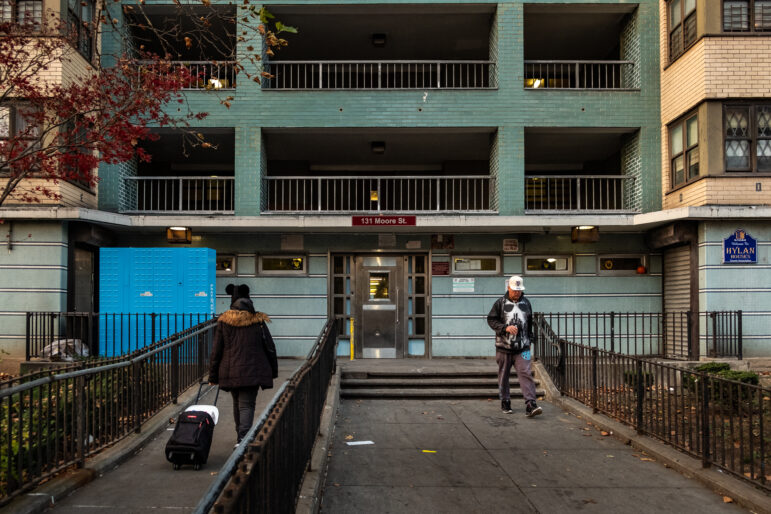
Photo by: Marc Fader
Rikers Island holds people awaiting trial and folks serving sentences of less than a year.
One thing is certain: New York City is building more cells for solitary confinement on Rikers Island. Whether that’s a good idea or not depends on what you read.
Mainstream coverage has it that the new private rooms are a necessary response to increased violence at Rikers.
But a new report by Solitary Watch notes that “Once the expansion is complete, New York City’s island jail will have one of the highest rates of solitary confinement in the country,” and that New York is bucking a national trend among corrections officials who have recognized the adverse affects of solitary confinement—which, the report points out, is used to address not just violence but a wide range of misbehaviors.
As City Limits reported in June, violence is also the rationale for a whole new jail the city hopes to build by 2017. In the background is that fact that, last year at least, violent felony arrests in New York were at a 10-year low; of course, misdemeanors can also involve violence, and even people busted for non-violent offenses could act violently behind bars.
In other policy news:
But deep in the details is a chapter devoted to the equity impact of those changes: how rising water and temperatures will affect different groups.
The findings paint a complex picture. New York City residents are better off than people in communities who rely on well water because our large reservoir network is better at withstanding droughts. But the location of sewage treatment plants in the city, and its reliance on combined sewers, works against the Big Apple.
With some exceptions, the threat to seaside residential property affects more affluent New Yorkers, but the poor are more likely to suffer from resulting public health problems. What’s more, efforts to harden the city’s road and transit infrastructure to the effects of climate change may, the report says, just reinforce existing inequalities: Those with ready access to cars and transit will have a safer evacuation route, while those without such access will be at a larger disadvantage.
The report also raises questions about how the city will decide which projects will fall under the law, which applies to developments receiving $1 million in benefits. Does that threshold cover those that get at least $1 million in bond financing, those whose bonds cost the city at least $1 million in foregone taxes, or those who get at least $1 million in interest savings from the use of tax-free bonds? The three different tests produce vastly different results. On a $5 million issue of tax-free bonds, for instance, the city loses $51,000 in tax revenue but the developer could enjoy $1.8 million in savings.
Using the latter approach, IBO estimates that if the living wage law had been in place from 2002 on, it would have affected 42 projects from 2002 through 2008—a small number that reflects numerous limitations and carve-outs (for manufacturing and affordable housing) in the current draft of the bill.
When City Limits looked at community colleges in a 2010 investigation, one challenge we examined was the role the colleges play in providing remedial instruction to students poorly prepared by their high schools. While necessary, these courses discourage students and sap precious time and money from people who often are balancing school with work and family responsibilities.








